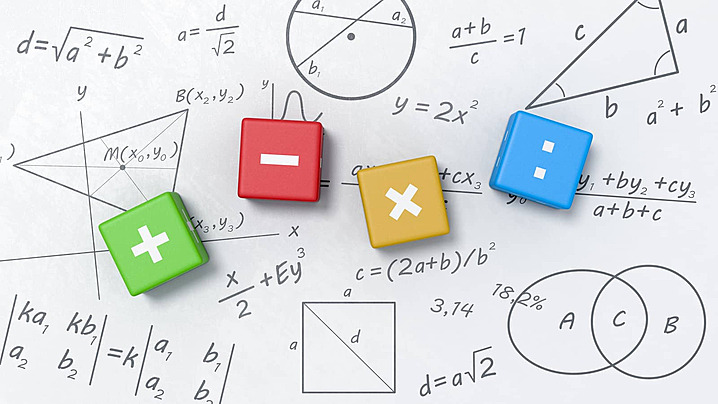
Basic Arithmetic Operations
Addition, subtraction, multiplication, and division.
Mobile application developed as part of my academic projects

A calculator mobile application developed as part of my academic projects.
Available in both simple and scientific layouts, my calculator provides an efficient and responsive space to do the math for you.
My calculator includes the following functionalities:

Addition, subtraction, multiplication, and division.

The user interface is built using XML files that define a grid-like structure for the buttons and display area:
This calculator app demonstrates a foundational implementation of a robust mathematical tool for Android devices. While it offers essential functionalities, further refinements in both UI and feature set will enhance its utility and user experience.
(Please click on the ticks for more details, also please note that non clickable ticks are implementational and for code only.)
| Rapport | Principes UX - Joel Marsh | ✓ |
| Critique travail | ✓ | |
| Presentation innovation | ✓ | |
| Rapport GitLab Pages | ✓ | |
| Indications de ce qui est fait | ✓ | |
| Test unitaire | Nommage | ✓ |
| Effort fonctionnel | ✓ | |
| Technique Test avancées | ✓ | |
| Application | Responsive | ✓ |
| Vert/Horizontal | ✓ | |
| Ne crash pas | ✓ | |
| Installation sur tel | ✓ | |
| Resources pour constantes | ||
| Usage pertinent Layout | ✓ | |
| Service/Thread | ||
| Calculatrice | Javascript Engine ou equivalent | |
| Analyse de vulnérabilité CVE des dependances | ✓ | |
| Proper blinking effect | ||
| RSS | Volley / Picasso | ✓ |
| SAX ou DOM / Ou JSON - REST | ✓ | |
| Acces une base de donnée | ||
| ROOM | ||
| Static config file | ||
| Caffeine / google.common.cache | ||
| Bonifications | Collaboration | ✓ |
| Config CICD (main forcee) | ||
| Recherches personnelles | ✓ | |
| Qualité de rapport | Professor's judgement | |
| MVVM | ||
| Deploiement PlayStore | ||
| Internationalisation | ✓ |
In my calculator app, I focused on applying Joel Marsh's principles of Visual Design and Functional Layout Design to create a clean and intuitive experience. I used Visual Weight, Contrast, & Depth by making key buttons like "CE" and "=" stand out with bold orange against a dark background, ensuring they grab attention. I also paid attention to Alignment & Proximity, carefully arranging the circular buttons in a consistent grid that groups related functions together, making the layout easy to navigate. From a functional perspective, I designed the interface to follow a natural Z-Pattern and Visual Hierarchy, so users can quickly scan and interact with it. By keeping frequently used buttons easily accessible and visually clear, I feel like I’ve created an app that balances both usability and simplicity.
I’m proud of the foundation I built with my calculator app, especially the clean UI, responsive design, and functional basic operations. The app works smoothly for arithmetic calculations, and the use of the mxparser library was effective for handling expressions. However, I recognize there’s still room for improvement. Some scientific features are placeholders, which I’d like to implement fully, and the parsing logic could be optimized to handle complex expressions more efficiently. Overall, it’s a strong start, and I’m excited to refine it further.
I have used the jacoco to mesure my code coverage. The jacoco report file is a generated html that you can find in Calculatrice\app\build\reports\jacoco\jacocoTestReport\html\index.html .
I used OWASP Dependency-Check as my dependency vulnerability scanner. The analysis revealed 82 vulnerabilities in the dependencies used in my projects. I have detailed some of them in the table below:
| Dependency | CVE ID | Issue |
| MathParser.org-mXparser (4.4.2) | CVE-2008-3891 | |
| Google Guava (28.1-jre) | CVE-2023-2976, CVE-2020-8908 | Known vulnerabilities in Guava versions related to deserialization issues and insecure configuration. |
| Apache Commons IO (2.13.0) | CVE ID: CVE-2024-47554 | Vulnerability related to path traversal and insecure file handling. |
| Netty (4.1.72.Final and 4.1.93.Final) | CVE-2023-44487, CVE-2023-34462, CVE-2022-24823, etc. | Multiple vulnerabilities, including DoS attacks (HTTP/2 Rapid Reset) and remote execution risks. |
| GRPC (1.57.0) | CVE-2023-44487 | Vulnerability in GRPC related to HTTP/2 processing. |